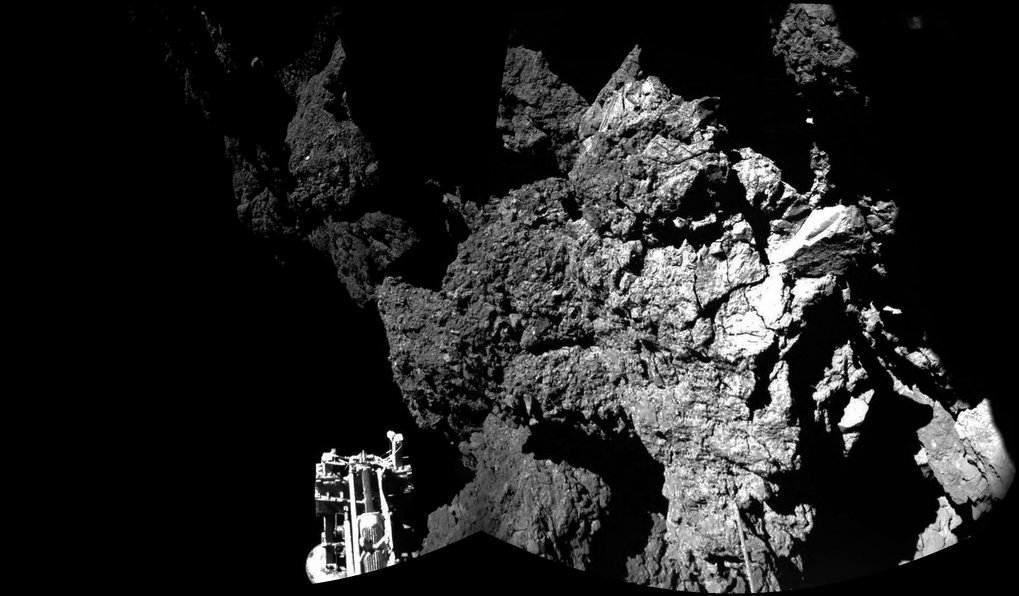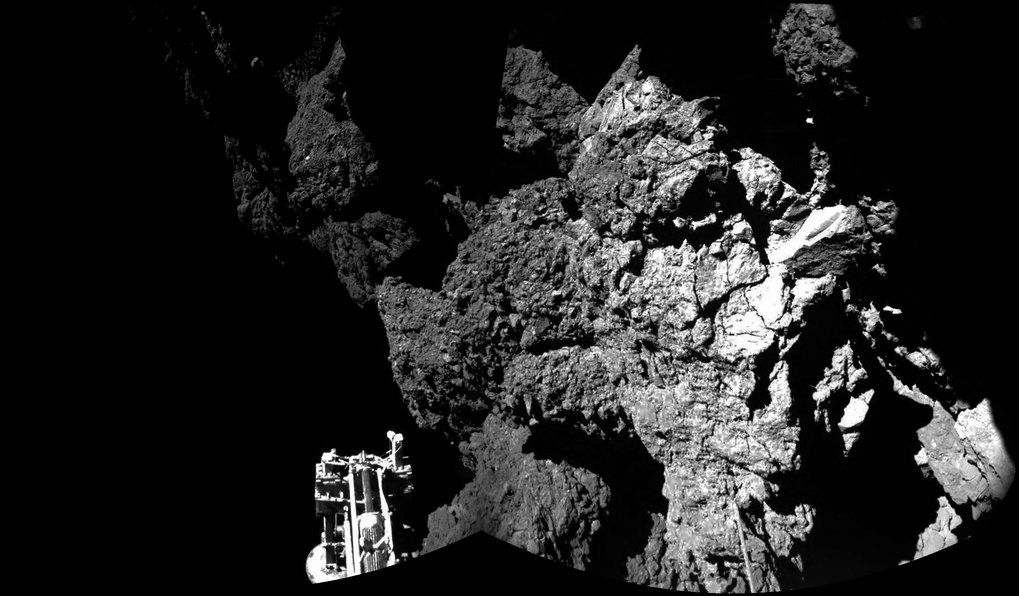Philae sends signs of life
The lander of the Rosetta mission is awake and sending back data from the surface of the comet 67P / Churyumov-Gerasimenko
Philae, Rosetta' solar-powered lander has woken up from its nearly seven months of hibernation. On Saturday, June 13, 2015 at 22.28 CET, Philae phoned home, sending initial data to Earth. More than 300 data packets are being evaluated. They mainly contain information about Philae's "health" and have shown that the comet probe has an operating temperature of -35 degrees Celsius and 24 watts of energy available. For 85 seconds, Philae "spoke" to its team on Earth in its first contact since going into hibernation. On June 14, the lander made follow-up contact with Earth, sending some further data packets between 23.22 CET and 23.26 CET. This time, however, the connection was rather faint.

"We are confident that we will soon again be able to carry out scientific measurements," says Dr. Hermann Böhnhardt from the Max Planck Institute for Solar System Research, scientific director of the landing mission. In recent months, the Philae team had developed strategies how Philae's instruments could be operated with little energy. For this purpose, 24 watts would have been enough. "In addition, we expect that more energy could be available in the next few weeks," said Böhnhardt.
The analysis of status data at the weekend showed that Philae must have been awake earlier. The data packets contain information from previous days. However, apparently Philae was unable to make contact with Rosetta at the time.
Before the ground team is able to control the lander, approximately at a 304 million kilometers distance, here from Earth, stable and longer connections must be made possible. Only then the prepared instructions for the scientific work of the ten instruments on board can be uploaded and the next experiments begin.
The experts will not decide the order in which the instruments should be used until they have information on Philae's health. "Initially, the non-mechanical instruments will no doubt be used - i.e. instruments that do not drill or hammer," says Stephan Ulamec, Philae project manager at the German Aerospace Center (DLR). Instruments that consume little energy and must only send small amounts of data to Earth will also be in the forefront.
Now the scientists and engineers are waiting for the next contact. Philae's mass memory contains more than 8000 data packets which should provide further insights into how Philae fared on comet 67P/Churyumov-Gerasimenko.
Philae had gone into emergency hibernation on November 15, 2015 at 1:15 CET, after it had been in operation for about 60 hours on the comet. Since March 12, 2015, the communication unit on the orbiter Rosetta was repeatedly turned on to call the lander and receive its answer.
****************
Rosetta is an ESA mission with contributions from its member states and NASA. Rosetta's Philae lander is contributed by a consortium led by DLR, MPS, CNES and ASI.
BK / HOR
